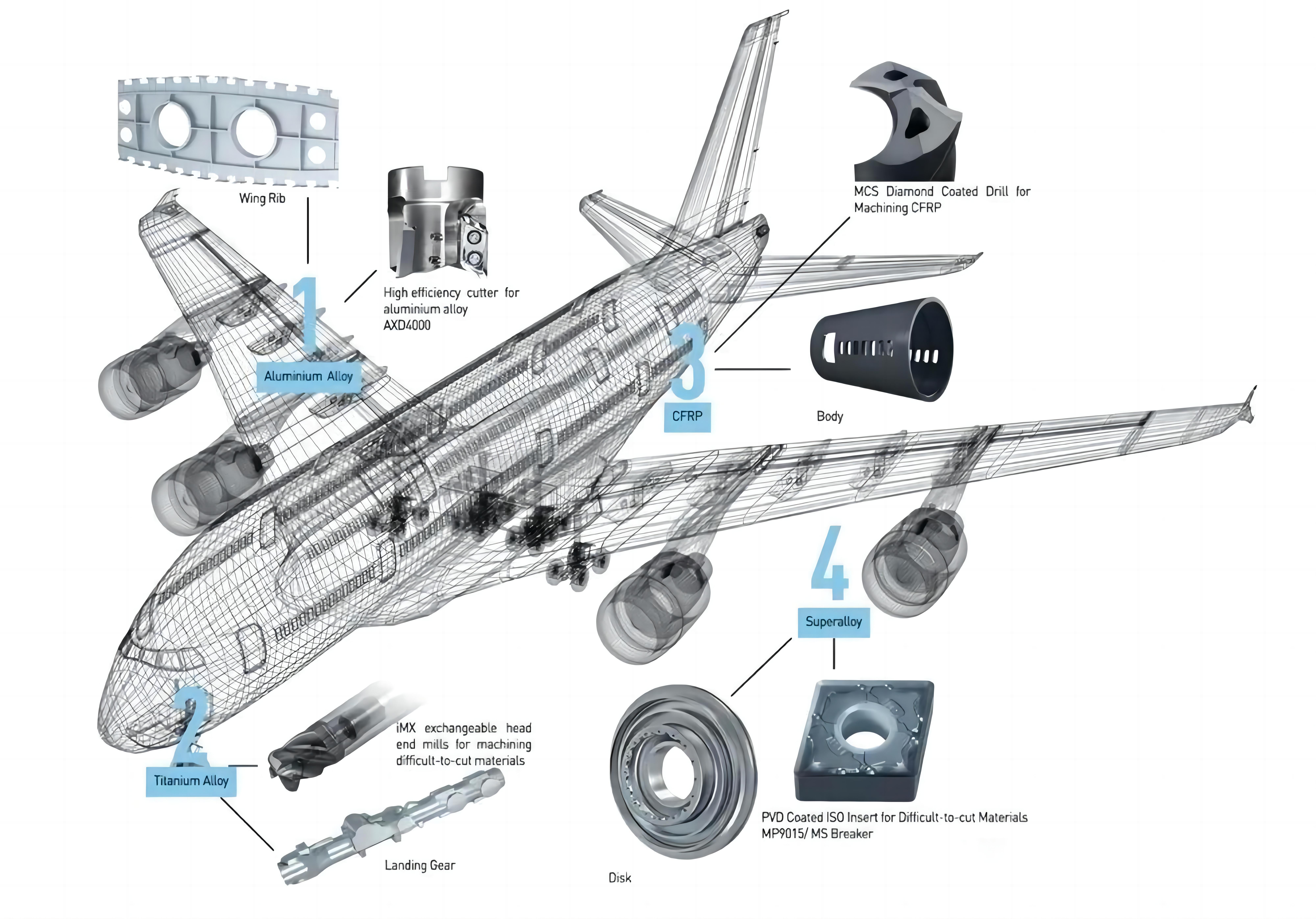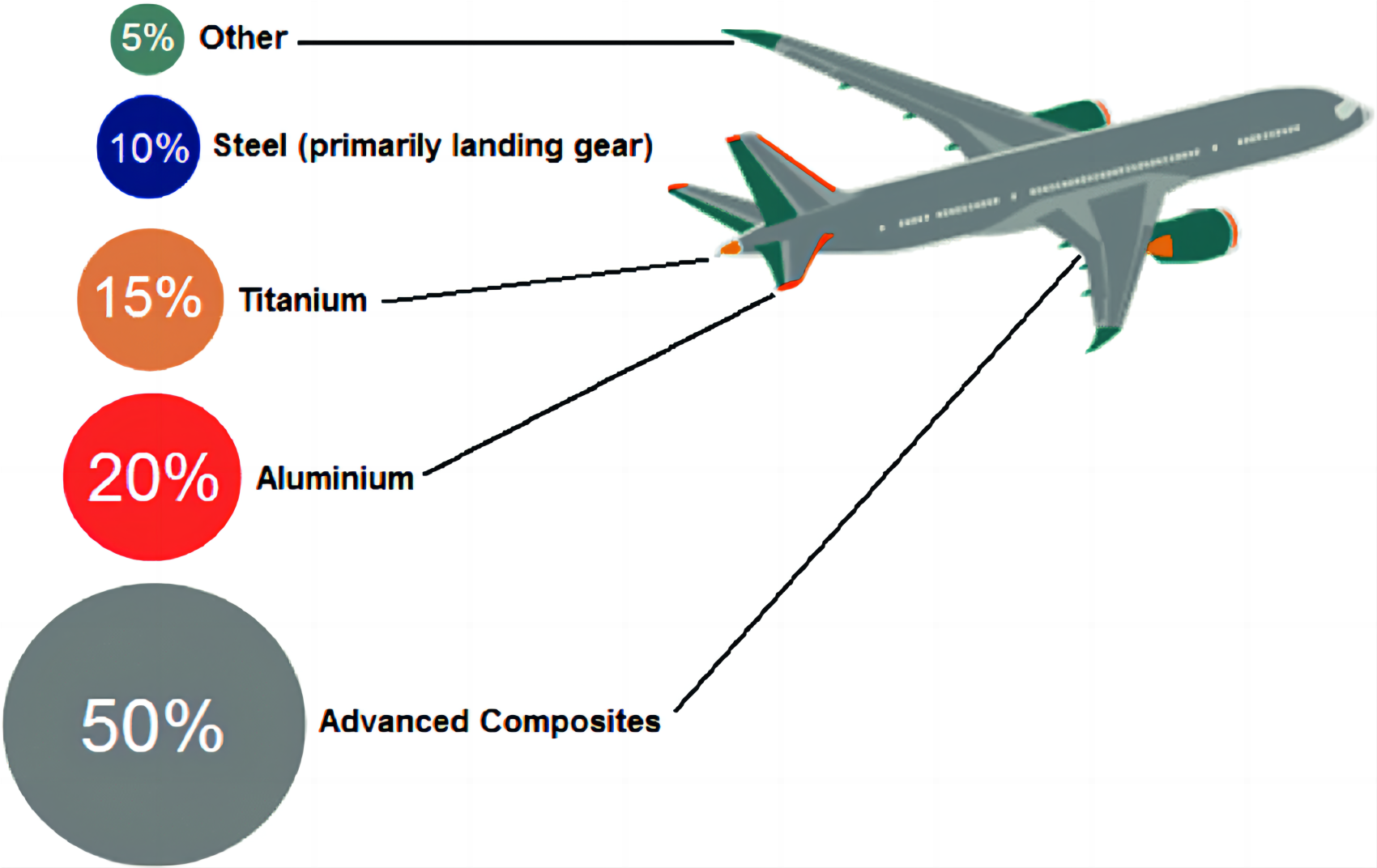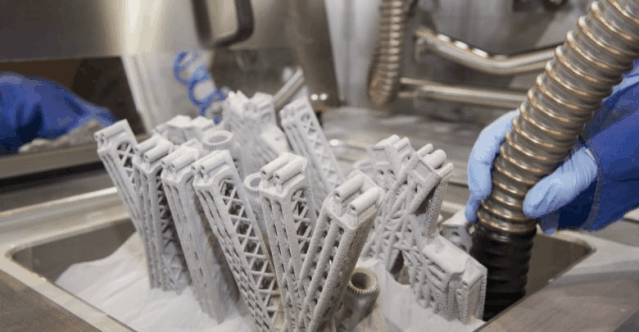technological innovation
Aluminum alloys: An excellent choice for additive manufacturing in the aerospace industry.
From the perspective of cutting-edge scientific exploration and development, Science has previously published an article pointing out that modern industry demands structural materials with high strength, fracture toughness, stiffness, and lightweight properties. In light of these requirements, lightweight high-strength alloys represented by aluminum and titanium, as well as heat-resistant alloys represented by nickel-based superalloys, have become key materials in the research and development plans of various countries. They are also important materials in the field of laser additive manufacturing. In this issue, we will delve into additive manufacturing of aluminum alloys.

Aluminum alloys, with their excellent combination of low density and structural strength, are widely used in various industries such as aerospace, automotive, and mechanical manufacturing, whether through 3D printing or CNC machining. They play a particularly significant role in the aerospace industry and are considered the primary structural materials in aviation.
Aluminum alloys have a density that is only one-third of steel, making them the most widely used and common lightweight material for automotive applications. Research has shown that aluminum alloys can be used up to 540 kg in a complete vehicle, resulting in a weight reduction of 40%. The use of full aluminum bodies in vehicles from brands such as Audi and Toyota serves as excellent examples of this trend towards lightweighting in the automotive industry.

Aluminum alloys are suitable for operating in environments below 200°C. In the aerospace industry, aluminum materials account for over one-third of the Airbus A380 aircraft's structure, and conventional high-performance aluminum alloys are extensively used in the C919 aircraft as well. Aluminum alloys can be used for aircraft skin, bulkheads, wing ribs, and other components.

Additive manufacturing of aluminum alloys and the aerospace industry
Aluminum-based alloys have low density, high strength-to-weight ratio, excellent corrosion resistance, and good formability. They are widely used in various industries as a type of non-ferrous structural material with excellent physical and mechanical properties. However, aluminum-based materials are considered challenging to process in the context of additive manufacturing, primarily due to their unique physical properties such as low density, low laser absorption rate, high thermal conductivity, and susceptibility to oxidation. From the perspective of additive manufacturing processes, aluminum alloys have low density and relatively poor powder flowability, leading to difficulties in achieving uniform powder distribution on the powder bed in selective laser melting (SLM) or ensuring continuous powder feeding in laser metal deposition (LMD). Therefore, high precision and accuracy are required in the powder spreading/powder delivery system of additive manufacturing equipment for aluminum alloys.
Currently, the aluminum alloys primarily used in additive manufacturing are Al-Si alloys. Among them, AlSi10Mg and AlSi12, which have good flowability, have received extensive research attention. However, due to the inherent material properties of Al-Si cast aluminum alloys, even with optimized additive manufacturing processes, it is challenging to achieve tensile strengths beyond 400 MPa. This limitation restricts their usage in load-bearing components with higher performance requirements, such as those in the aerospace industry.

In recent years, numerous companies and universities both domestically and internationally have accelerated their research and development efforts to obtain higher mechanical performance in aluminum alloys for additive manufacturing. A significant number of high-strength aluminum alloys specifically designed for additive manufacturing have been introduced to the market. Airbus, for example, developed Scalmalloy, the world's first high-strength aluminum alloy powder material dedicated to additive manufacturing, with a room temperature tensile strength of 520 MPa. Scalmalloy has been used in the additive manufacturing of structural components for A320 aircraft cabins.
HRL Laboratories in the United States has developed a high-strength aluminum alloy, 7A77.60L, with a strength exceeding 600 MPa for 3D printing. It is the first forging-equivalent high-strength aluminum alloy suitable for additive manufacturing. NASA's Marshall Space Flight Center has started using this material for the production of large-scale aerospace components.
In the field of 3D printing, the China Academy of Railway Sciences Corporation Limited has developed a new high-strength aluminum alloy specifically for 3D printing, surpassing the patent restrictions of Airbus. This domestically developed alloy exhibits stable tensile strength exceeding 560 MPa, significantly outperforming the printability of Airbus' Scalmalloy powder. It meets the requirements for 3D printing high-end manufacturing components in domestic rail transportation equipment, aerospace, and other industries. Furthermore, domestic aerospace institutions have also begun applying high-strength aluminum alloys to additive manufacturing.

The 3D-printed biomimetic bulkhead used by Airbus in aircraft cabins.

The 3D-printed aluminum alloy aircraft thin-walled inlet duct has dimensions of 1308.488x676.747x230mm.
End
Modern aerospace components need to meet a series of demanding requirements, including lightweight, high performance, high reliability, and low cost. These components have complex structures, making their design and manufacturing more challenging. By innovating and developing key technologies for controlling the shape and properties of typical aerospace aluminum, titanium, and nickel-based components through laser additive manufacturing, we can achieve the development direction of lightweight and high-performance materials. This also highlights the trend of precision and net-shape development in additive manufacturing technology. It enables integrated additive manufacturing of materials, structures, and performance, leading to significant engineering applications of additive manufacturing technology in the aerospace industry.
RELATED NEWS
- Not sure about the T4, T5, and T6 materials of aluminum profiles? This article h 2024-03-20
- How to use aluminum profile section design skills to solve extrusion production 2024-03-19
- Factors affecting the life of trimming and punching molds 2024-03-12
- Overview of Steel/Aluminum Welding Technology 2024-02-29
- Steel belt conveying direction 2023-09-26
CATEGORIES
LATEST NEWS
CONTACT US
Contact: Manager:Miss Jasmien
Phone: +8618825429836
E-mail: info@gdaa-cn.com
Whatsapp:+8618825429836
Add: Headquarter:No.8,Yixian Road,GDAA Mansion,Guangfo Zhicheng, Dali Town,Foshan,Guangdong.China
